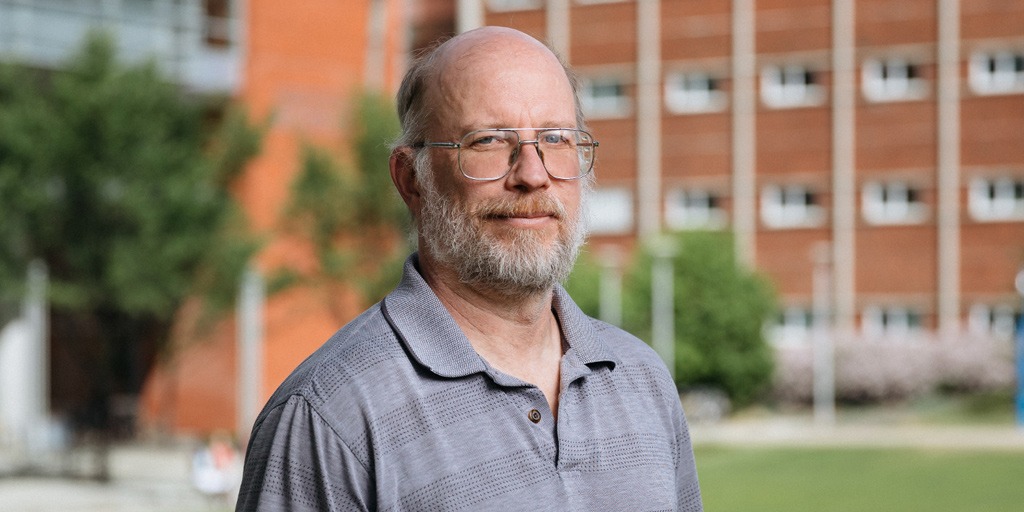Although the human genome and proteome — our complete set of genes and proteins, respectively — are well studied by scientists, the metabolome is not. The need to continue developing methods to better investigate the total number of metabolites in the human body was the subject of the first NIEHS cross-divisional seminar (see sidebar).
David Wishart, Ph.D., from the University of Alberta, discussed both targeted and untargeted metabolomics approaches, beginning with a question. We estimate there are at least 115,000-135,000 metabolites in the human body, but how many can we measure?
“In genomics, we have 100% coverage of the genome and about 50% of the proteome,” Wishart said. “Hovering at 1% of metabolomics is not enough. I argue that we need coverage in the major biological pathways, which only requires 5% coverage. One percent is too little. Ten to 15% would be pretty good.”
Wishart is the founder and current co-director of The Metabolomics Innovation Centre (TMIC), Canada’s national metabolomics laboratory. Wishart also initiated the Human Metabolome Project, a multi-university effort focused on characterizing all the metabolites found in the human body. The primary outcome of the project is the Human Metabolome Database.
Targeted vs. untargeted metabolomics
At first glance, targeted metabolomics — the measurement of pre-defined groups of metabolites — appears to be the best research approach, according to Wishart. It is precise and quick, with high-quality data validity. Yet, the method, by its very definition, is limited, he noted.
Untargeted methods, on the other hand, allow for practically unlimited coverage and enable discovery of novel compounds. However, untargeted metabolomics doesn’t allow for concentration measurement, is not automated, and lacks standardization.
Embracing a hybrid method
Wishart said that what he sees as the path forward is combining the two previously siloed methods. Using chemical isotope tracking combined with in silico metabolomics, researchers can develop computational predictions and compare databases of known compounds with those of hypothesized or expected compounds.
 Metabolomics researchers must embrace computational approaches and be creative in how they tackle questions, according to Wishart. (Photo courtesy of Nestor Rizhniak / Shutterstock.com)
Metabolomics researchers must embrace computational approaches and be creative in how they tackle questions, according to Wishart. (Photo courtesy of Nestor Rizhniak / Shutterstock.com)With help from the National Institute of Standards and Technology, researchers can combine isotope tagging with untargeted methods. The hybrid method can be approached in several ways, including the following:
- Generating chemical compound fingerprints and comparing to known databases.
- Using molecular weights, chemical formulas, mass spectra, gas chromatography, and ion mobility spectroscopy to predict observable structures.
- Predicting compound structures to overcome what Wishart calls “chemical dark matter.”
Wishart said he is hopeful that the hybrid method will shed light on unknown metabolites.
“It gives you the broad coverage you expect with untargeted, and can also give you relative quantification,” Wishart explained. “And it’s actually quite feasible to do with a bit of chemistry.”
Spirit of inquiry
 At NIEHS, Crizer focuses on untargeted metabolomics methods to screen potentially toxic substances. (Photo courtesy of Steve McCaw / NIEHS)
At NIEHS, Crizer focuses on untargeted metabolomics methods to screen potentially toxic substances. (Photo courtesy of Steve McCaw / NIEHS)Wishart’s lecture set a tone of scientific exploration and collaboration, which are drivers behind the institute’s new seminar series.
“Dr. Wishart’s talk was fantastic in that it wasn’t just focused on some new project he has been working on, but instead he chose to give a brief overview of where the metabolomics field currently stands,” said David Crizer, Ph.D., a chemist in the Mechanistic Toxicology Branch who organized the event.
“He spent the time talking about where he thinks the field is moving and how some of these issues that currently exist could be solved,” noted Crizer.
(Kelley Christensen is a contract writer and editor for the NIEHS Office of Communications and Public Liaison.)
Source link
factor.niehs.nih.gov



